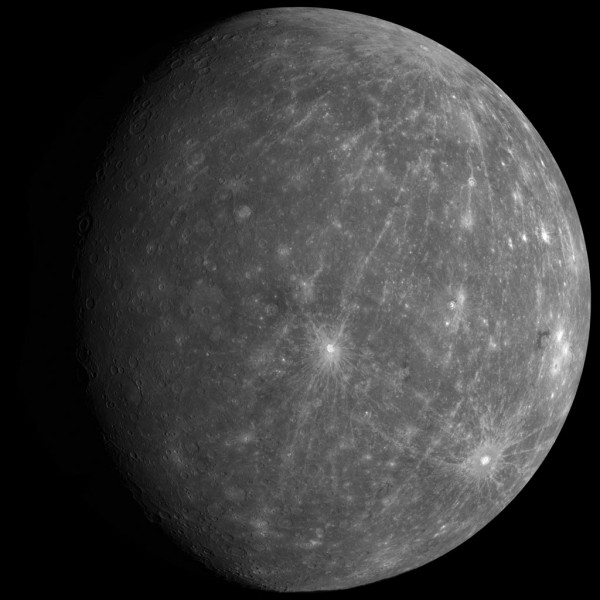As you may have noticed, there's a new super-high resolution mosaic of the planet Mercury that's available.

How high resolution is it? Perhaps you should join me on my journey as I zoom in to the upper left hand corner. (Click each image to view it full-size.)

While Mercury may look unevenly cratered, keep in mind that there's a trick of the light going on here. When you're close to the limit of where the Sun's rays reach (the terminator), angles are lower and shadows are longer, making craters appear more pronounced.

In reality, there are "young" regions all over Mercury, where more recent lava activity has covered up old craters. In regions that are young, only a few, relatively recent craters cover the surface.

But I've chosen an "old" area to zoom in on. An area with craters atop craters atop craters. And I find it absolutely spectacular.

So go ahead. Play with the 20 Megabyte .png file, if you dare! You might enjoy it as much as you enjoyed the one for the visually similar Moon!

Thanks for the explanation of the uneven cratering... That's been bugging me!!
Tell them next time to turn up the lights for taking pictures.
Gorgeous views!
Speaking of planets, I am sure you have seen the new news about Saturn already-- I can't wait to get your perspective on it.
http://digitalcuttlefish.blogspot.com/2009/10/new-bling-for-saturn-gali…
What's with all the concentric craters? That's pretty damn good aim, I say.
It looks to me like a crater inside a crater and both of them got filled up to the rims by molten material, and then two newer craters were created in the area that got filled it.
Aiming is no problem. The whole planet is saturated with craters. The oldest craters are all gone, they've been covered several times over with later craters of various ages.
What software do you ppl you to view such large images? something that is intuitive and zoomable like google earth?
Nathan, the crater in question with concentric rings was formed from one impact event. In the parlance of impact physics, this kind of crater is known as a "multi-ring basin." These form whenevr the depth-to-diameter ratio of the crater surpasses a certain value. When that happens, the crater walls will become gravitationally unstable and collapse. This forms one ring in addition to the outer crater rim. Often, another inward-facing fault scarp forms either within or outside the crater rim, and this collapses as well to form further rings.